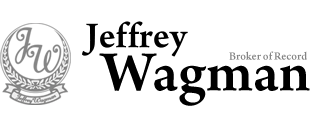Greater Toronto Area Sees Significant Growth in Second Quarter of 2016
7/13/2016
| SHARE
Posted in GTA Real Estate by Vanguard Realty | Back to Main Blog Page

The Royal LePage House Price Survey¹ and Market Survey Forecast released today showed double-digit growth in the prices of homes across the Greater Toronto Area (GTA). In the second quarter of 2016, the aggregate² price of a home climbed 10.2 per cent to $656,365 year-over-year.
When broken down by housing type, the median prices of two-storey homes and bungalows in the GTA rose 11.4 per cent and 10.7 per cent year-over-year in the second quarter to $770,676, and $638,479, respectively. Condominiums in the region saw moderate price gains, increasing 3.7 per cent to $371,159 during the same period.
The strongest growth during the quarter was found in regions outside of Toronto's city limits, with all but Mississauga outpacing the core. "Homebuyers are now increasingly venturing into the GTA's suburban areas in search of relatively affordable housing, many coaxed by rock-bottom interest rates and fears of being priced out of the market," said Gino Romanese, senior vice president, Royal LePage. "This added activity is bolstering demand in an already inventory-constrained environment, and contributing to a surge in multiple-offer situations across the region."
As a result, ten out of the twelve suburban areas surrounding the city experienced double-digit growth in the second quarter, with Richmond Hill surging 21.3 per cent year-over-year.
Growing demand from foreign buyers³ has also contributed to the price appreciation witnessed across the GTA. According to a survey4 of Royal LePage real estate advisors working within the region, 71 per cent stated that year-over-year home purchases by international buyers increased in the second quarter of 2016. With that said, a large proportion of Royal LePage advisors (35 per cent) believe that foreign buyers represent less than 10 per cent of the GTA market, with 27 per cent of respondents in Richmond Hill, 26 per cent in Vaughan, and 25 per cent in Markham claiming that foreign buyers made up 21 to 30 per cent of home purchases in these suburban markets in 2016.
Looking ahead to the remainder of 2016, Royal LePage forecasts that the aggregate house price in the Greater Toronto Area will increase 14.9 per cent to $718,000.
"House price appreciation is expected to end the year at an accelerated pace when compared to 2015," added Romanese. "The factors driving the market are unlikely to change in the near-term as interest rates, foreign buyer activity, and supportive economic conditions remain decidedly intact, placing upward pressure on demand and prices in the GTA, and in turn further strain on the region's housing inventory."
Greater Toronto Area Market Summaries
House prices in Toronto continued to climb in the second quarter of 2016, rising 8.4 per cent year-over-year to $680,096 on the back of chronically low inventory levels and perpetual demand stemming from domestic and international buyers. As a result, multiple offer situations have become the norm, leading many would-be homebuyers to shelter themselves from the competitive, high-priced environment on the buy side, furthering the region's shortage in supply.
Just east of Toronto, many homebuyers continued to flock to Scarborough due to its relative affordability and close proximity to the downtown core. The aggregate house price within the region climbed by 9.5 per cent year-over-year to $544,772 in the second quarter, forcing many first-time buyers in search of a single-family detached home further east or into the region's condominium market.
In the York Region, Richmond Hill experienced the strongest gains in appreciation east of British Columbia, with aggregate prices surging 21.3 per cent year-over-year to $992,632, in part due to increased foreign buyer activity in the region. Similarly, prices in Vaughan also posted significant gains, increasing by 10.1 per cent year-over-year to $780,699 over the same period of time.
Influxes of domestic and foreign buyers coupled with low inventory levels have pushed prices higher in Markham, with many vying for space within the region. Multiple offers are now the norm as rock bottom interest rates and the relative value of the yuan and U.S. dollar have encouraged many to buy Canadian, resulting in an unprecedented level of demand within the region. As a result, the aggregate home price appreciated by 12.4 per cent year-over-year in the second quarter, reaching $825,753.
In the north west, Brampton saw its aggregate house price climb by 11.1 per cent year-over-year to $549,153, with inventory levels lagging behind strong demand as many flocked to the area for its affordability and close proximity to Toronto. Sales were up across all housing types, as the region continued to attract first-time buyers looking to enter the market.
Mississauga maintained its upward trajectory in the second quarter of 2016, rising 7.0 per cent year-over-year to an aggregate price of $582,683. Significant interest within the region dwarfed supply, leading to many properties selling within a week of being listed. As a result, unit sales have soared, reaching unprecedented levels.
One of the fastest growing communities in Canada, Milton, has experienced a substantial gain in house prices, with its aggregate house value rising 12.1 per cent to $605,917 in the second quarter, when compared to the same quarter last year. Increased demand, brought on by the region's relative affordability, has led to a prominence of multiple offer situations, resulting in many first-time buyers being priced out of the market.
Properties in Oakville also continued to be in high demand throughout the second quarter, resulting in a significant year-over-year aggregate price increase of 10.2 per cent to $844,314. A general lack of inventory has driven prices upward, as many buyers from across Richmond Hill, Vaughan and other regions within the northeast end of the GTA attempt to cash in on their property's appreciation and enter this prestigious market.
High prices for homes across the GTA have led many purchasers to venture east into the popular commuter towns of Durham in search of more affordable housing, causing sharp price increases in the second quarter of 2016. Whitby and Oshawa saw some of the GTA's strongest house price appreciation, with the aggregate price surging 17.1 per cent and 16.7 per cent year-over-year to$547,304 and $409,452, respectively. Pickering and Ajax also experienced a noteworthy uptick in aggregate house prices, increasing by 10.1 per cent and 11.4 per cent to $571,603 and $549,382 year-over-year, respectively.
Regional Pricing Data
|
Two-Storeys |
Bungalows |
Condominiums |
Aggregate |
|||||||||
|
Market |
Q2 2015 |
Q2 2016 |
Year-Over-Year % Change |
Q2 2015 |
Q2 2016 |
Year-Over-Year % Change |
Q2 2015 |
Q2 2016 |
Year-Over-Year % Change |
Q2 2015 |
Q2 2016 |
Year-Over-Year % Change |
|
Greater Toronto Area |
$691,827 |
$770,676 |
11.4% |
$576,999 |
$638,479 |
10.7% |
$357,867 |
$371,159 |
3.7% |
$595,730 |
$656,365 |
10.2% |
|
Toronto |
$882,679 |
$974,937 |
10.5% |
$646,411 |
$698,194 |
8.0% |
$390,870 |
$407,638 |
4.3% |
$627,577 |
$680,096 |
8.4% |
|
Scarborough |
$601,542 |
$656,398 |
9.1% |
$552,859 |
$629,673 |
13.9% |
$257,737 |
$260,353 |
1.0% |
$497,626 |
$544,772 |
9.5% |
|
Richmond Hill |
$883,305 |
$1,076,610 |
21.9% |
$710,019 |
$886,592 |
24.9% |
$323,257 |
$318,324 |
-1.5% |
$818,032 |
$992,632 |
21.3% |
|
Vaughan |
$774,442 |
$865,078 |
11.7% |
$675,900 |
$646,830 |
-4.3% |
$355,292 |
$364,965 |
2.7% |
$709,124 |
$780,699 |
10.1% |
|
Markham |
$787,659 |
$892,059 |
13.3% |
$803,512 |
$853,138 |
6.2% |
$342,308 |
$360,095 |
5.2% |
$734,343 |
$825,753 |
12.4% |
|
Brampton |
$513,033 |
$570,368 |
11.2% |
$431,007 |
$484,824 |
12.5% |
$246,634 |
$262,571 |
6.5% |
$494,178 |
$549,153 |
11.1% |
|
Mississauga |
$621,755 |
$665,011 |
7.0% |
$530,849 |
$594,905 |
12.1% |
$279,942 |
$286,588 |
2.4% |
$544,791 |
$582,683 |
7.0% |
|
Milton |
$560,048 |
$629,156 |
12.3% |
$463,948 |
$515,986 |
11.2% |
$298,767 |
$318,020 |
6.4% |
$540,463 |
$605,917 |
12.1% |
|
Oakville |
$810,809 |
$898,667 |
10.8% |
$636,973 |
$702,337 |
10.3% |
$765,889 |
$844,314 |
10.2% |
|||
|
Ajax |
$506,753 |
$564,139 |
11.3% |
$396,236 |
$456,202 |
15.1% |
$251,447 |
$254,013 |
1.0% |
$493,308 |
$549,382 |
11.4% |
|
Pickering |
$540,381 |
$597,503 |
10.6% |
$489,574 |
$549,683 |
12.3% |
$304,077 |
$284,559 |
-6.4% |
$519,004 |
$571,603 |
10.1% |
|
Oshawa |
$365,121 |
$427,264 |
17.0% |
$324,869 |
$376,736 |
16.0% |
$186,367 |
$205,424 |
10.2% |
$350,902 |
$409,452 |
16.7% |
|
Whitby |
$477,297 |
$556,822 |
16.7% |
$448,988 |
$538,104 |
19.8% |
$265,136 |
$307,981 |
16.2% |
$467,409 |
$547,304 |
17.1% |
*Data presented in the table above may not match same period data reported previously due to subsequent market updates
Nationally, Canada's residential real estate market continued to show strong appreciation in the second quarter of 2016, posting the highest national year-over-year gain seen in five years. Amid continued world economic uncertainty, the historically low interest rate environment that has fueled Canada's real estate market growth in recent years – most notably in Greater Vancouver and the Greater Toronto Area (GTA) – is expected to continue longer than anticipated. This extended period of low-cost borrowing will in turn further delay the cyclical cooling of Canada's hottest real estate markets, originally forecasted for the second half of 2016.
The price of a home in Canada increased 9.2 per cent year-over-year to $520,223 in the second quarter of 2016. During the same period, the price of a two-storey home rose 10.7 per cent year-over-year to $619,671, the price of a bungalow increased 7.9 per cent to $437,121, and the price of a condominium increased 4.2 per cent to $348,189. Looking ahead to the remainder of 2016, Royal LePage forecasts that the aggregate price of a home in Canada will increase 12.4 per cent when compared to year end 2015.
"Our forecasting models, which pointed to a slowing housing market as the year progressed, included a modest increase in the cost of borrowing," said Phil Soper, president and chief executive officer, Royal LePage. "Economic and social disruptions have rocked the world once again, introducing new risks and making it very likely that the Bank of Canada will leave interest rates as-is for now. Few industries are as rate sensitive as real estate. We don't see even a mild correction for either the Toronto or pistol-hot Vancouve rmarkets in 2016."
"Our call for 12.4 per cent national price appreciation in the final quarter of this calendar year as compared to the final quarter of last year, is a landmark in Canada. I believe it is the highest value put forward by any serious forecasting agency since the turn of the century," added Soper.
_______________________
|
1 Powered by Brookfield RPS |
|
2 Aggregate prices are calculated via a weighted average of the median values of homes for reported property types in the regions surveyed |
|
3 "Foreign buyers" are defined as buyers who have lived outside of Canada for at least six months over the last year. |
|
4 Findings are the result of a survey of 321 Royal LePage real estate advisors working within the Greater Toronto Area between the dates of July 1, 2016 and July 8, 2016. |
SOURCE Royal LePage Real Estate Services
Aurora, Brampton, GTA News, GTA Real Estate Market, House Prices, Markham, Milton, Mississauga, Oakville, Richmond Hill, Suburbs, Toronto, Toronto Real Estate, Vaughan, Whitby

Thinking of buying or selling a property, or have a question regarding the real estate market? Fill out the form below and we'll get back to you promptly.
